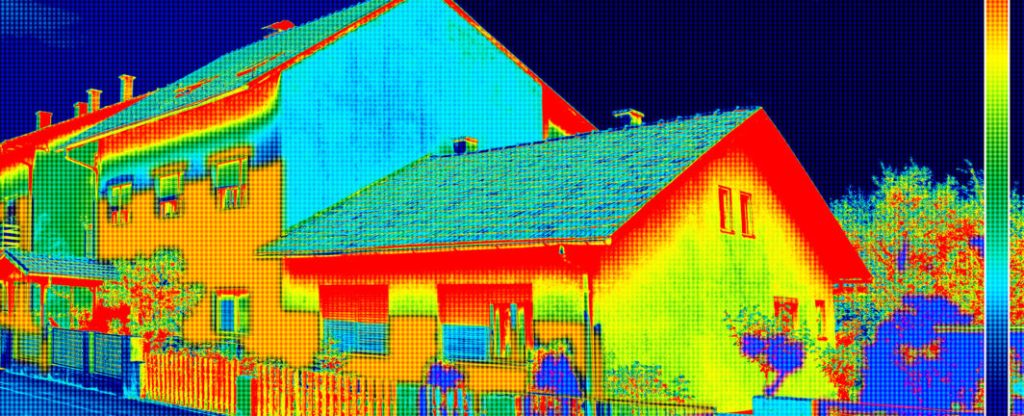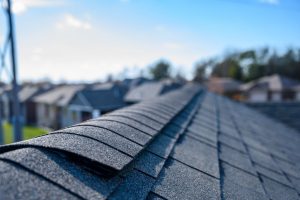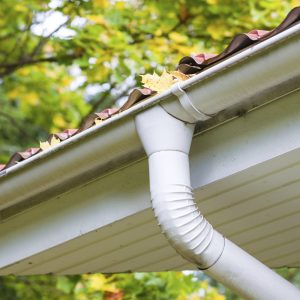This method of building inspection allows us to identify the source of certain problems without having to open the walls and go through every corner of a house. Infrared cameras can detect problems hidden by the house’s siding.
What the cameras are able to spot:
- A lack of waterproofing or thermal insulation of the exterior membrane of a house
- The presence of water infiltration in the walls, in the foundation or on the roof
- Presence of condensation in the walls
- Heat loss in the heating system (leakage in some heating systems)
- etc.
What is thermography?
It is a technique of recording a temperature on an object or on a material with the help of infrared rays. Infrared cameras record the temperature on certain surfaces at different points. They allow the reproduction of cartographic images of the building as well as the recorded measurements, also called “thermogram”.
A color code is used to understand the temperatures recorded by the cameras. The cold points will be represented by cold colors: green, blue, purple and even black. On the contrary, the hot spots on the surface of an element will be represented by the intensity of heat. Indeed, these colors can vary from yellow to orange, red and white. Recording very hot or very cold surface points can indicate an anomaly in the building.
For example, the thermograph captures your interior wall of the house and one can see a portion of the wall completely blue. This could indicate, in winter, a lack of thermal insulation. In this sense, if the same section of the wall was captured from the outside, we could see warm colors due to heat loss.
How is the data interpreted?
The work of analyzing a thermogram is complex. To interpret the data, several factors must be taken into account. To properly understand the colors obtained, we must, among other things, take into account the radiation characteristics of materials. For example, brick and aluminum do not capture heat in the same way and do not diffuse heat in the same way.
Also, when the technician makes use of a blower door, to control the interior air pressure of a building, the information obtained will be largely influenced by these atmospheric conditions at the time of the inspection. In these situations :
- A difference of 10°C or more between the interior and exterior must be taken into account when inspecting the building envelope. Therefore, the winter period is ideal. *Infrared cameras dating back several years must have a higher difference because of their less advanced technology.
- For the exterior inspection, it should be done in good weather. It should be early in the morning or a few hours after sunset. Rain and sunlight will alter the temperatures captured on the surfaces.
Who can do this kind of analysis?
Although some infrared cameras are sold on the internet, you can’t just become a thermography inspector. Indeed, we must be rigorous in our analysis and have the skills to obtain the right results. The images must be obtained and interpreted by certified experts. Level 1 certification is required for the use of the camera and level 2 for the writing of the report.
And after the inspection? The report
Once the camera inspection is completed, the inspector must analyze the data obtained. Finally, the inspector must provide a detailed report that contains :
- All infrared and digital photos showing the observed problems
- Explanations or construction details observed
- Diagrams illustrating the problem and the corrections to be made
- An explanation of the proposed correction methods and their implications
In the report, we must also find a description of the environmental conditions during the inspection as well as the parameters of image capture: temperature calibration, distance of the camera from the observed surfaces, emissivity of materials (the ability of materials to absorb and re-emit its energy through radiation), etc.
Finally, the inspector’s identity and qualifications must be included on the report.
How much does a thermographic analysis cost?
The cost may differ depending on the extent of the work to be done and the size of the surfaces to be analyzed. Therefore, the price of a single wall is not the same as the price of a complete house. You can ask for a price quote from the experts, so you can ask your questions and adjust your initial request if needed.





